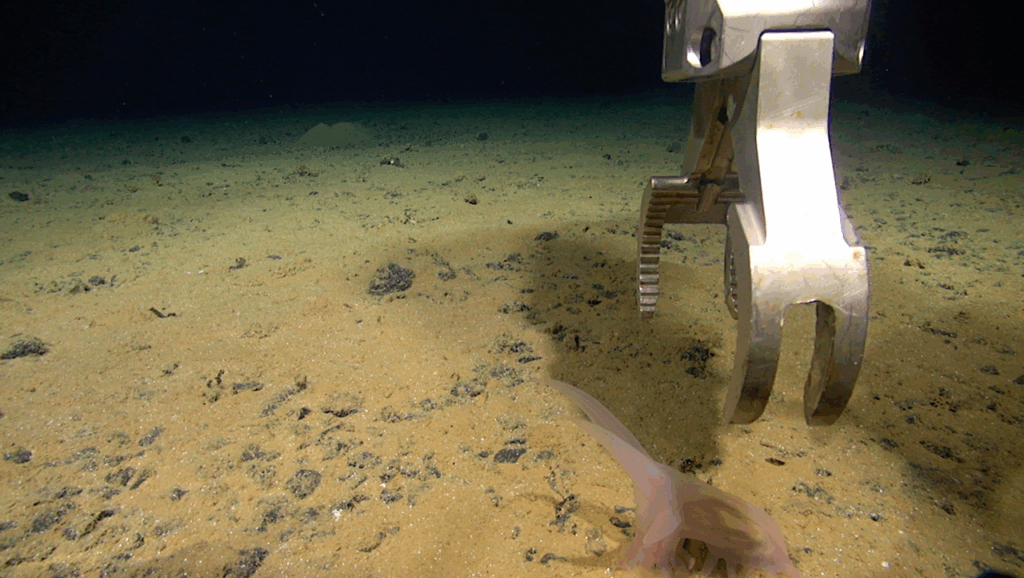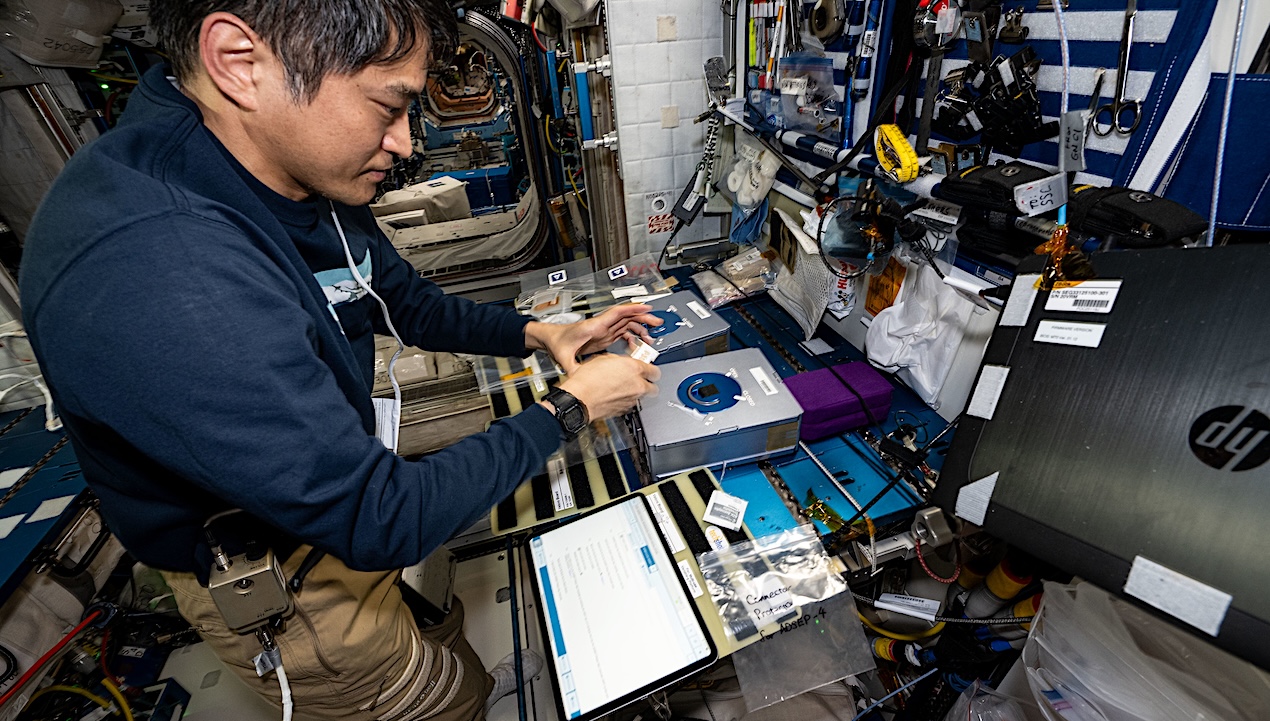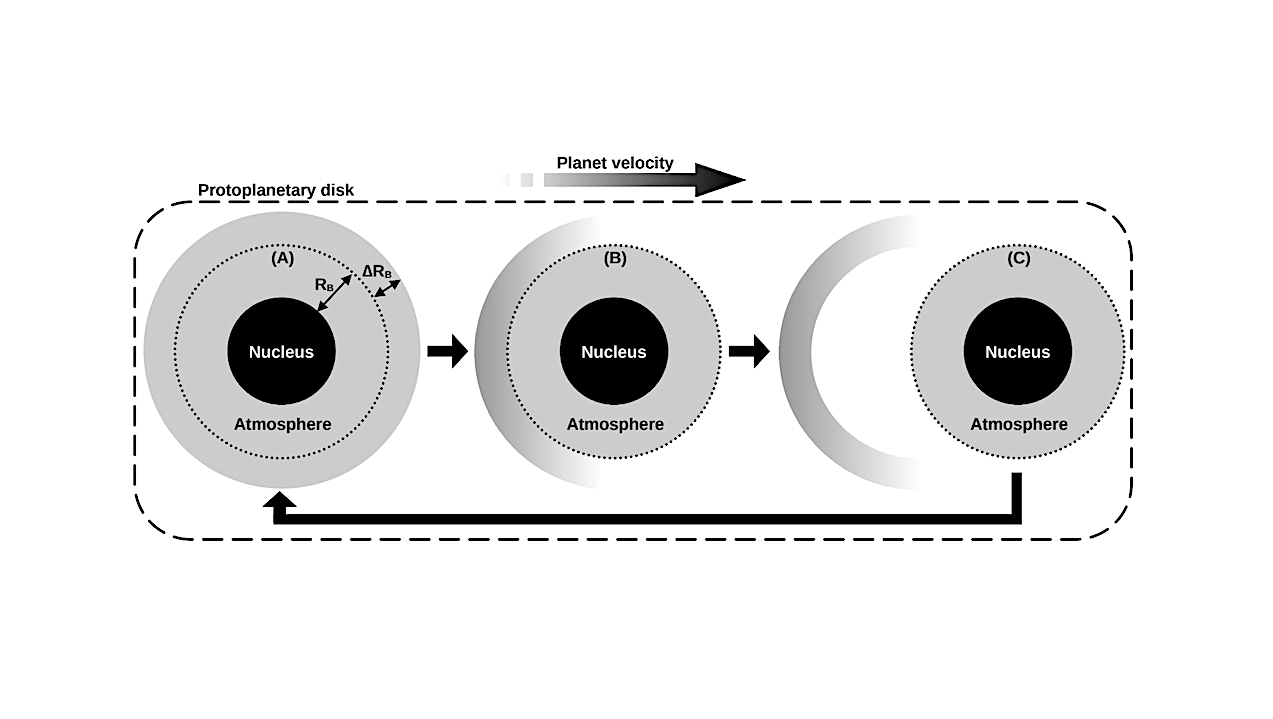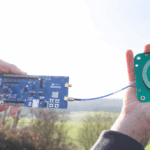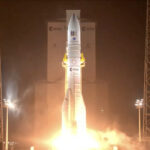Now Reading: Improved H2-He and H2-H2 Collision-Induced Absorption Models and Application to Outer-Planet Atmospheres
-
01
Improved H2-He and H2-H2 Collision-Induced Absorption Models and Application to Outer-Planet Atmospheres
Improved H2-He and H2-H2 Collision-Induced Absorption Models and Application to Outer-Planet Atmospheres
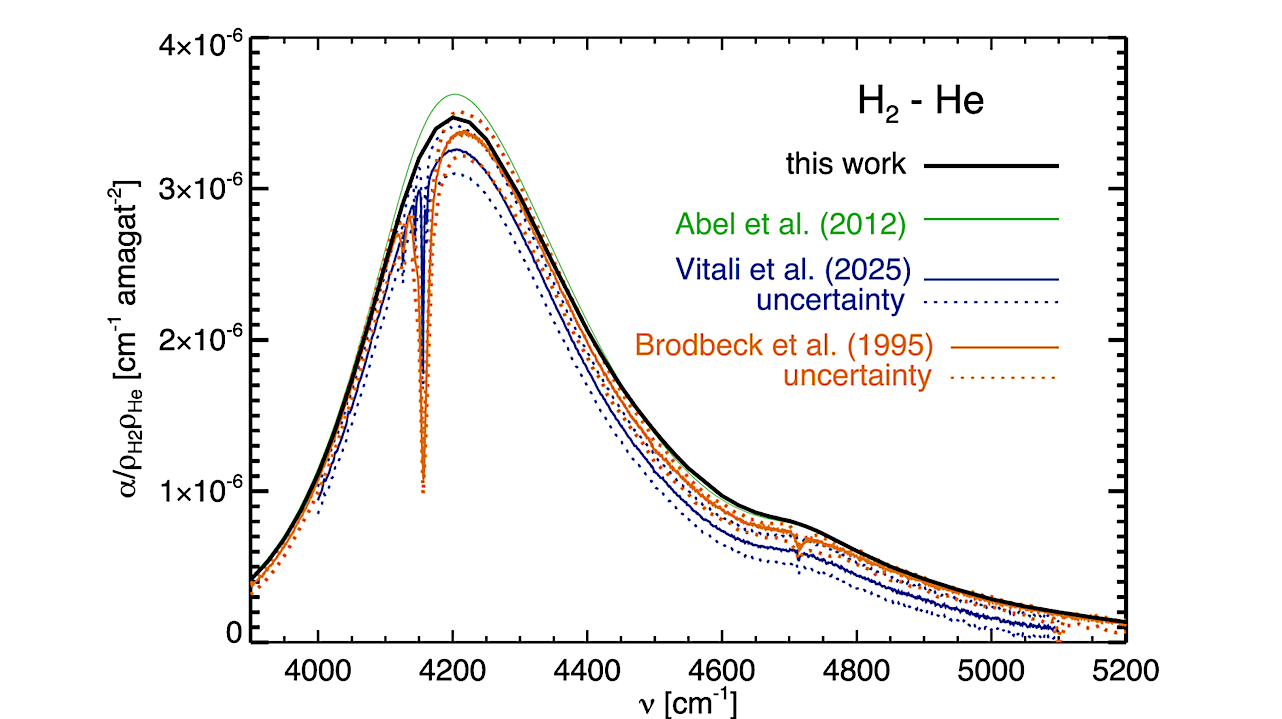

Binary collision-induced H2–He absorption coefficient, α, normalized by the hydrogen and helium gas densities, as function of frequency in the fundamental band, at 296 K. The parato-ortho distribution, is representative of equilibrium H2, just as in Fig. 2. Our model (“this work”), is compared with the model of Abel et al.17 for T = 300K, and with the laboratory measurements of Vitali et al. 18 and Brodbeck et al.19 , both of which were made near 296 K. We note that neither our model nor that of Abel et al. considered the discrete, intercollisional interference dips present in the laboratory spectra. — astro-ph.EP
Using state-of-the-art ab initio interaction-induced dipole and potential-energy surfaces for hydrogen-helium (H2-He) pairs, we compute the rototranslational collision-induced absorption coefficient at 40-400 K for frequencies covering 0-4000 cm-1.
The quantum mechanical scattering calculations account for the full anisotropic interaction potential, replacing the isotropic approximation. The absorption data are expected to be accurate with an uncertainty of 2% or better up to 2500 cm-1. The uncertainty is slightly higher at the highest frequencies where the rototranslational absorption is largely obscured by the rovibrational band.
Our improved agreement with measurements at 200-800 cm-1results from the improvement of the potential energy surface. The previously available rototranslational data set for H2-H2 pairs (Fletcher et al., Astrophys. J. Supp. 235, 24 (2018)) is also extended up to 4000 cm-1. In the rovibrational band previous isotropic potential calculations for H2-He (Gustafsson et al. J. Chem. Physics. 113, 3641 (2000)) and H2-H2 (Borysow, Icarus 92, 273 (1992)) have been extended to complement the rototranslational data set. The absorption coefficients are tabulated for ortho-to-para ratios from normal-H2 to pure para-H2, as well as equilibrium-H2, over 40-400 K.
The effect of these updates are simulated for the cold atmosphere of Uranus and warmer atmosphere of Jupiter. They are equivalent to a brightness temperature difference of a fraction of a degree in the rototranslational region but up to 4 degrees in the rovibrational region. Our state-of-the-art modifications correct an otherwise +2% error in determining the He/H2 ratio in Uranus from its spectrum alone.
Glenn S. Orton, Magnus Gustafsson, Leigh N. Fletcher, Michael T. Roman, James A. Sinclair
Comments: 30 pages (including an Appendix), 13 figures, 3 tables
Subjects: Earth and Planetary Astrophysics (astro-ph.EP); Chemical Physics (physics.chem-ph)
Cite as: arXiv:2506.09257 [astro-ph.EP] (or arXiv:2506.09257v1 [astro-ph.EP] for this version)
https://doi.org/10.48550/arXiv.2506.09257
Focus to learn more
Submission history
From: Glenn Orton
[v1] Tue, 10 Jun 2025 21:35:22 UTC (1,916 KB)
https://arxiv.org/abs/2506.09257
Astrobiology, astronomy,
Stay Informed With the Latest & Most Important News
Previous Post
Next Post
-
 012024 in Review: Highlights from NASA in Silicon Valley
012024 in Review: Highlights from NASA in Silicon Valley -
 02Panasonic Leica Summilux DG 15mm f/1.7 ASPH review
02Panasonic Leica Summilux DG 15mm f/1.7 ASPH review -
 03From Polymerization-Enabled Folding and Assembly to Chemical Evolution: Key Processes for Emergence of Functional Polymers in the Origin of Life
03From Polymerization-Enabled Folding and Assembly to Chemical Evolution: Key Processes for Emergence of Functional Polymers in the Origin of Life -
 04How New NASA, India Earth Satellite NISAR Will See Earth
04How New NASA, India Earth Satellite NISAR Will See Earth -
 05And Thus Begins A New Year For Life On Earth
05And Thus Begins A New Year For Life On Earth -
 06Astronomy Activation Ambassadors: A New Era
06Astronomy Activation Ambassadors: A New Era -
07SpaceX launch surge helps set new global launch record in 2024














